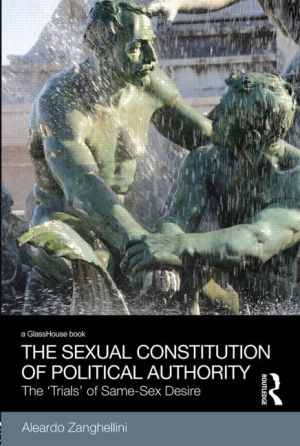
The role of State power in regulating the sexual field is generally understood. The way in which sexual discourses and practices have themselves moulded the State and its power, however, remains under-appreciated and under-theorized.
The Sexual Constitution of Political Authority analyses the history of same-sex political scandals and rumours in Europe from antiquity to the present. Addressing court and media ‘trials’, it does so with a view to addressing the following question: How are political authority, public offices, and the relationship between rulers and the ruled sexualised? Specifically, the bookexamines the shifting ways in which political power has been culturally constructed in relation to same-sex desire over the course of several centuries of European history, arguing that how we treat or respond to the sexual orientation of rulers and holders of public office reveals something important about the sexual dimensions of political power.